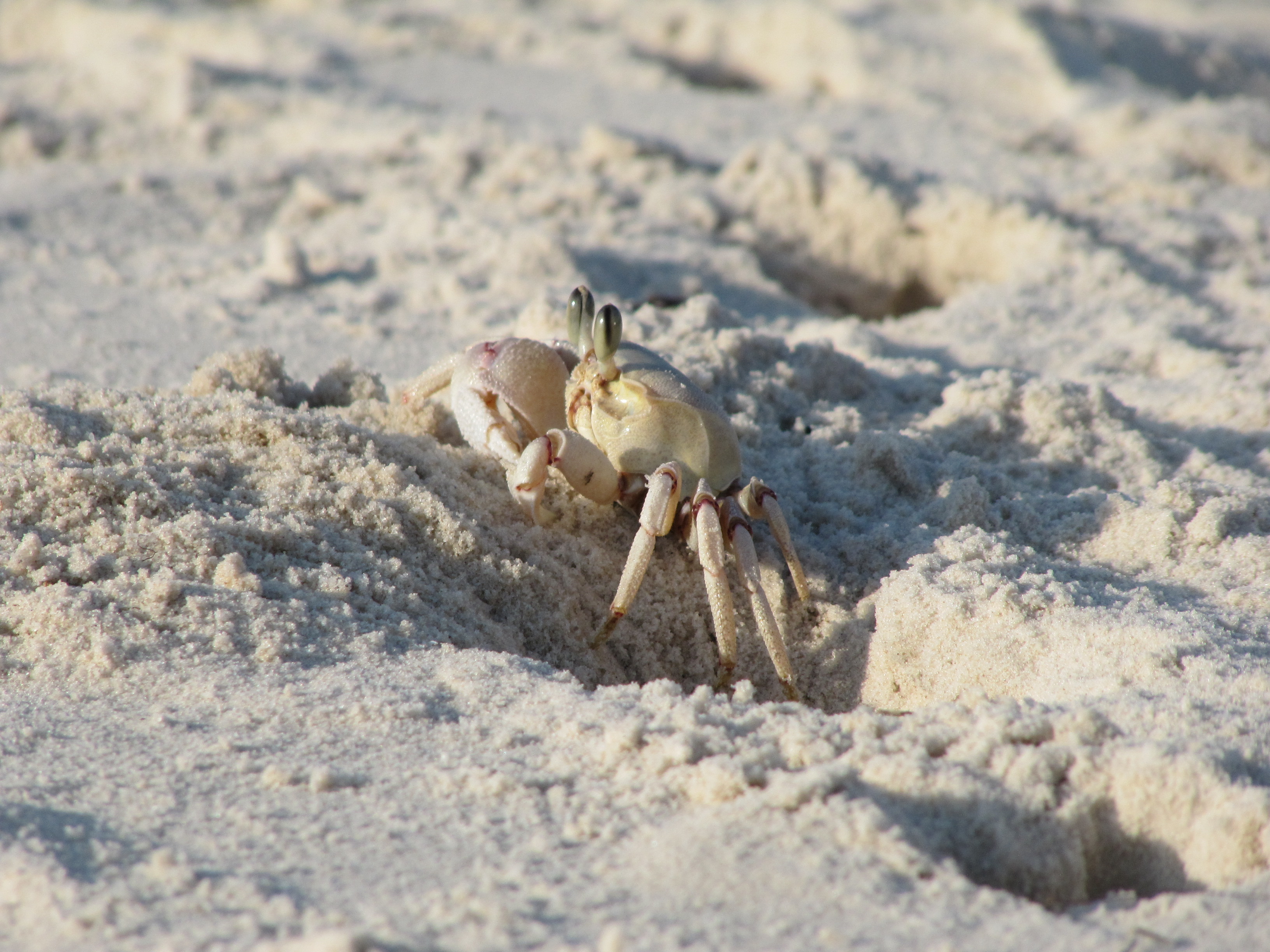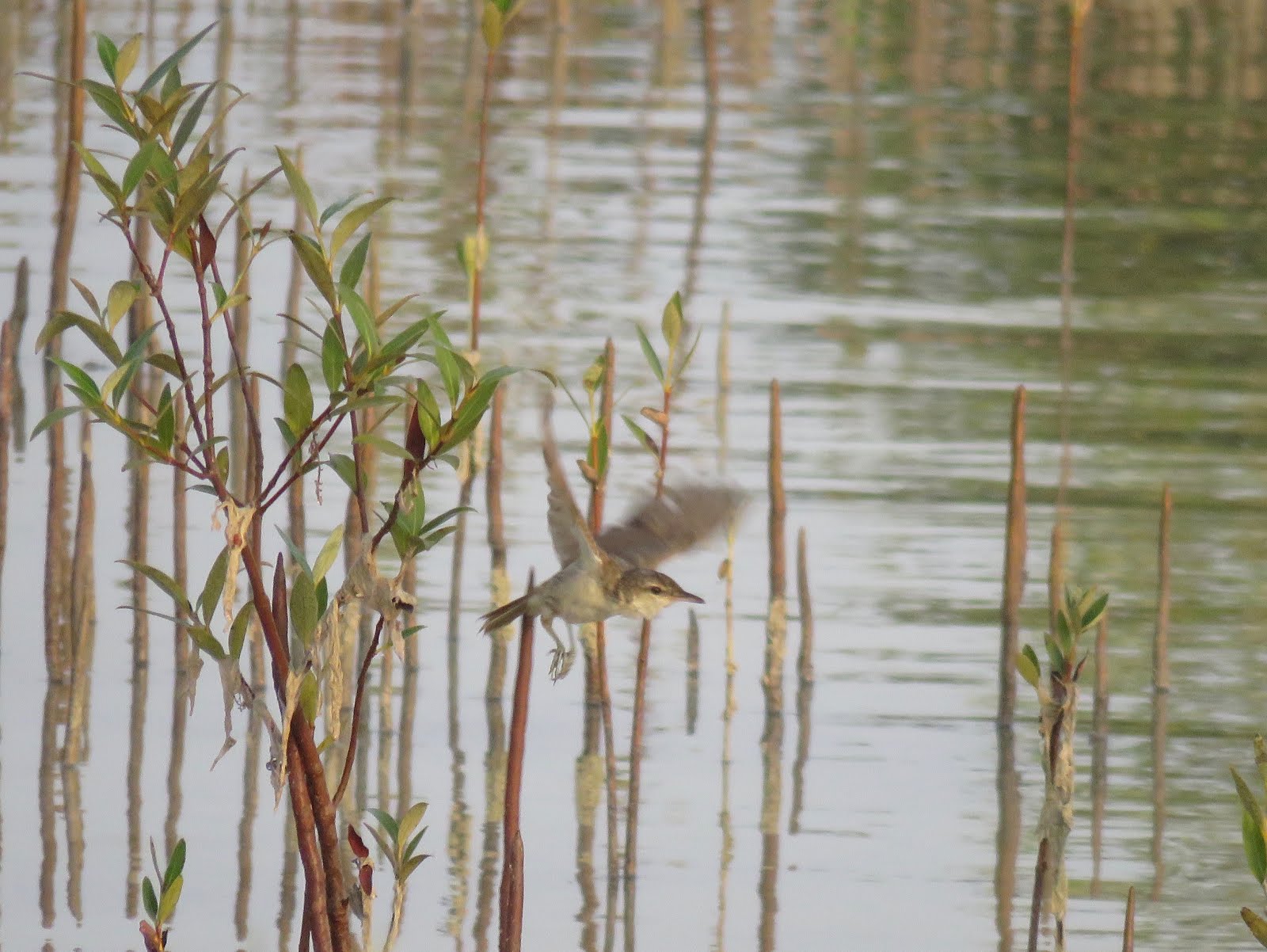KAUST commits to nature conservation

Ghost crabs Ocypode saratan inhabiting the sandy littoral fringing the mangrove in 'Ibn Sina' field research station. Photo credit: Marco Fusi
- By Meres Weche, KAUST News
During the past few months, KAUST has approved an Ibn Sina Field Research Station & Nature Conservation Area in KAUST, near King Abdullah Monument (KAM), which is a joint proposal from the Red Sea Research Center (RSRC) and KAUST Health, Safety and Environment Department(HSE). The conservation area will span a wide coastal area encompassing 152 hectares from the beginning of the Safaa Gardens neighborhood's coastline mangroves, opposite Safaa Island, all the way up to KAM.
"One of the University's Environmental Stewardship Policy guiding principles is to facilitate environmental collaboration between the academic units and the administration," said Dr. Mohamed S. Omar, Environmental Protection Manager at KAUST. His division's role is to assess and monitor the environmental impact in teaching, research, procurement, planning, construction and overall operations at KAUST.
"We publish policies, procedures, guidelines, offer training, as well as perform inspections and audits. We basically operate like an internal environmental watchdog agency that regulates KAUST's operations," added Omar.
When the Ibn Sina Field Research Station and Nature Conservation Area in KAUST waters project came along, it provided an ideal vehicle to promote the cooperation between academic and administration departments — all around a common goal to protect the precious marine environment surrounding the University.
Studying and preserving coastal mangroves
An extensive marine study was initially undertaken to look at the University's coastal area. Elements such as water quality, the state of soil and sediment, what kind of mangroves exist and the types of animals living in the KAUST coastal ecosystem were examined.

KAUST is home to more than 240 bird species including this Clamorous Reed Warbler, a summer breeding bird that feeds on insects in the mangrove plants. Image credit, Brian Anthony James.
Another important role played by the mangrove ecosystem is that it protects the coast area from erosion. Interestingly, as opposed to the global trends where mangrove ecosystems are decreasing, they are actually thriving around the Red Sea. KAUST HSE studies have shown that our mangrove populations at KAUST have increased by about 20% in the last ten years.
Designating 152 hectares for nature conservation and research
Professor Carlos Duarte, Director of the Red Sea Research Center at KAUST, is an expert in mangrove ecosystems. He has also conducted similar studies. His group's data matched with the marine study conducted by the KAUST Environmental Protection unit of HSE. In light of the fact that other faculty members were also engaged in studying mangroves, the discussion around establishing a field station gained traction.
This is why, given the healthy status of the mangroves, the interest of researchers and the efficiency of working on coastal waters, it became convenient to designate an area of coastal waters for research at KAUST.
152 hectares of protected area reserved for nature conservation and research, sign of KAUST’s commitment to biodiversity. Image credit, Health, Safety and Environment Department.
One of the other KAUST faculty members studying the mangroves around KAUST is bioscience professor Daniele Daffonchio. His group is interested in studying the disturbance made by animals in the sediment, in particular crabs. The mangrove crabs make burrows in the sand, which leave the sediments open to air. This air penetration affects the sand's exposure to oxygen, which in turns affects the overall mangrove ecosystem. Daffonchio and his team have installed in the area a logging station to measure solar irradiance, temperature and tidal cycles.
Sand bubbler crabs Dotilla sulcata inhabiting the mangrove the 'Ibn Sina' field research station. Despite the little dimension, it can occur with a density higher than 80 specimens per square meter, making this species one of the most ecological relevant species in Red Sea mangrove forest. Photo credit: Marco Fusi
Deploying sophisticated data-collecting instruments
"Also because the area is tightly protected, it means that we can deploy expensive instruments and other sophisticated equipment, collecting high quality data, in the water without the risk of them being removed by fishermen," added Duarte.
Some of the data collection, and resulting research, which will now be made possible include the deployment of advanced logging instruments to study the growth and types of algae in the coastal waters near the King Abdullah Monument.
"The one-hour resolution, which will be an unprecedented resolution, will help us to look at the dynamics of plankton. We also hope to look at the growth and population dynamics of seaweed and seagrass," said Duarte. "Even though it's a small area, it has a bit of everything. The fact that it will not be disturbed allows us to investigate in terms of experimental designs over the long-term."
Professor Susana Agusti, also from the Red Sea Research Center, is working on the deployment of a state-of-the-art buoy close to KAM. This piece of equipment will gather daily or hourly samples of the plankton and send back data through an Internet connection.
"Conventional sampling techniques required going to sea to take samples. Then returning to the lab and examining the samples under the microscope and other instruments. This precludes sampling at the high-frequency scales (days or hours) required to capture the demographic dynamics of these fast growing organisms. The deployment of automatized instruments in the buoy enable the continuous sampling of plankton and will catalyze new discoveries," said Agustin.
Mangroves, KAUST is home to more than 90 hectares of thriving mangrove forest that have grown about 20 percent in the last decade. Image credit, Health, Safety and Environment Department.
Establishing a base of knowledge for the Red Sea
It's also important to note that, unlike other marine environments with a longer track record of scientific inquiry, much remains unknown about the Red Sea. "We plan to monitor the plankton at the reliable time scales of changes, and this will help predict future responses," said Agusti. "We will be pioneering this kind of information from the Red Sea."
The changing environment, as observed in the rising temperatures of the Red Sea, makes the KAUST coastal waters a living laboratory not only for Saudi Arabia, but will also help predict how other organisms and ecosystems elsewhere will progress as global temperatures rise.
The team is planning some interesting ways to engage the community in this important institutional conservation effort. This includes the installation of a webcam that will allow KAUST residents to observe the marine environment from home.

